Selected References:
- Barcz E, et al. 2007. Influence of Echinacea purpurea intake during pregnancy on fetal growth and tissue angiogenic activity. Folia Histochemica et Cytobiologica 45:Supp. 1; 35-39.
- Chow G, et al. 2006. Dietary echinacea purpurea during murine pregnancy: Effect on maternal hemopoiesis and fetal growth. Biol Neonate; 89: 133-138.
- Gallo M, et al. 2000. Pregnancy outcome following gestational exposure to echinacea. Arch Intern Med. 160:3141-3143.
- Heitmann K, et al. 2016. Pregnancy outcome after prenatal exposure to echinacea: The Norwegian Mother and Child Cohort Study. Eur J Clin Pharmacol. 72(5): 623-630.
- Huntley AL, et al. 2005. The safety of herbal medicinal products derived from Echinacea species. Drug Saf 28(5):387-400.
- Lewicka A, et al. 2019. Supplementation of plants with immunomodulatory properties during pregnancy and lactation—maternal and offspring health effects. Nutrients 11(8):1958.
- Linde K, et al. 2009. Echinacea for preventing and treating the common cold. Cochrane Database of Systematic Reviews 2(2):CD000530
- Matthias A, et al. 2008. Bioavailability of Echinacea alkamides in human breast milk. Planta Med; 74-SL59.
- Natural Standard (Ed). Herbs & Supplements – Echinacea (E. angustifolia DC, E. pallida, E. purpurea). Nature Medicine Quality Standard. [Retrieved on November 2014]. naturalstandard.com
- Ondrizek RR, et al. 1999. Inhibition of human sperm motility by specific herbs used in alternative medicine. J Assist Reprod Genet. 16(2):87-91.
- Perri D, et al. 2006. Safety and efficacy of echinacea (Echinacea angustifolia, E. purpurea and E. pallida) during pregnancy and lactation. Can J Clin Pharmacol 13(3):e261-7.
- Peprah P, et al 2019. ‘We are nothing without herbs’: a story of herbal remedies use during pregnancy in rural Ghana. BMC 19(1):65.
- Sarecka-Hujar B, Szulc-Musioł B. 2022 Herbal Medicines—Are They Effective and Safe during Pregnancy? Pharmaceutics; 14(1):171.

